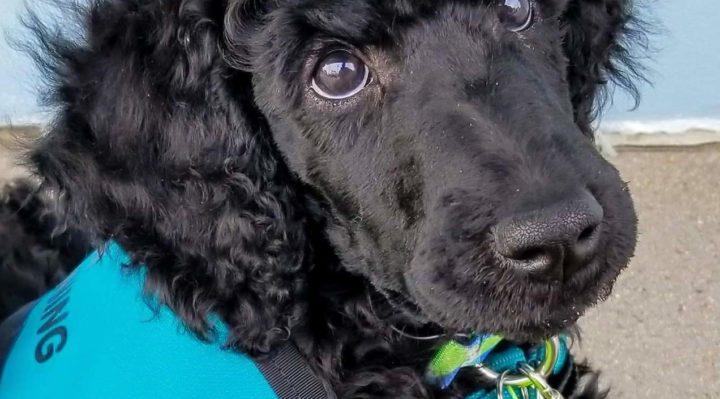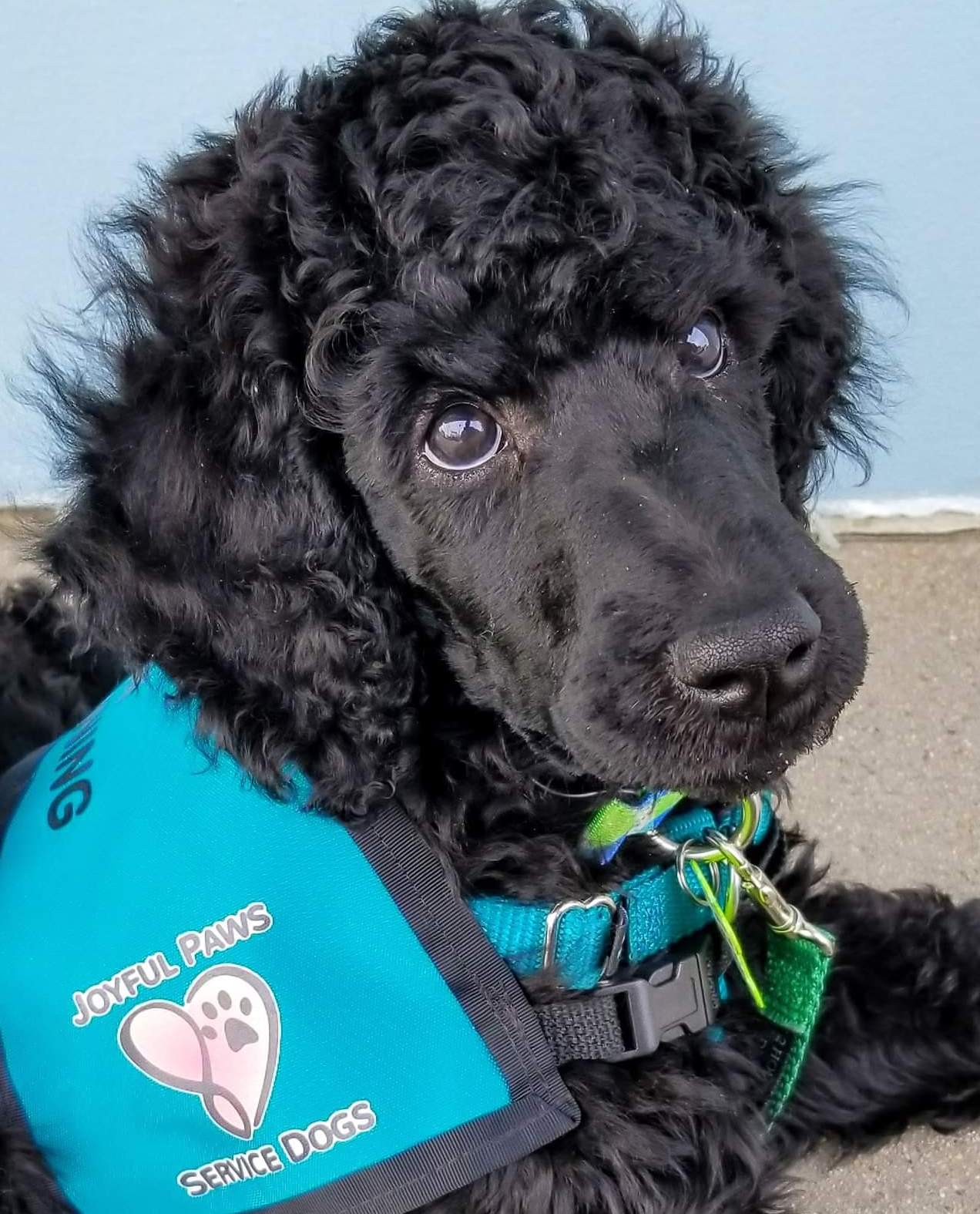
Recently, the U.S. Department of Transportation (DOT) announced that it is revising its Air Carrier Access Act (ACAA) regulation on the transportation of service animals by air to ensure a safe and accessible air transportation system. Airlines will no longer allow Emotional Support Animals free rides unconfined in passenger seating; service dogs will be the only animals allowed that access.
Last week, I asked service-dog training professionals and service-dog handlers, “What are your thoughts about the benefits of this decision to travelers with service dogs?”
This week, I’ve added responses from handlers and trainers of ESAs as well as one from a therapist:
Terry Kaye (California) I have a (legit) Emotional Support Animal who has been traveling with me for probably 14 years. Real therapist. Well-trained dog. I am frustrated by those with fake online papers bringing untrained and bitey dogs—and freaking PEACOCKS—on airlines and mucking it up for the rest of us, and also for making things difficult for people with service dogs. Honestly, I don’t have an issue if airlines want to start charging for ESAs and I have no problem filling out the now-required paperwork stating that my dog is properly trained and that, if anything happens, I am liable. But I have a BIG problem with the fact that American (and one other airline so far, I think) are now not allowing ESAs at all. Granted, I didn’t use American anyway because they treated people with ESAs (and from what I have heard, also service dogs) abysmally. But my worry is that other airlines will follow suit. In case you wanted any input from the legit ESA side of the equation.
Janice Langbehn (Washington) Finally!
Katherine Brynelsen (Washington) Long overdue.
Nan Keen Arthur (California) Glad.
Colette Kase (Mexico) Living in places where lots of U.S. people snowbird, I’ve been appalled at the common and flagrant abuse of the “emotional support” label just so people can have special privileges with their dogs on planes. They are always mentioning the “how to” on social media pages, with tips and hints and links to webpages for dodgy certifications.
Debi Davis (Nevada) I would not mind ESAs at all, were it not that I have yet to meet one who could pass a public-access test. Considering that public access requires the lengthiest amount of training, tons of proofing in different environments and on different substrates, with every possible distraction, I don’t see this happening anytime soon. Training tasks is the easy part. But public access requires a dog with a rock-solid temperament and lots of proofing in all different environments they might one day work within.
Manda Lorian (Wisconsin) I have a certified therapy dog who is specially trained to work in health care facilities. I am also a psychologist and have the ability to provide medical documentation for people to have ESAs. That being said, I rarely give those letters out unless it’s for something like allowing a cat into a pet-free apartment. My reason is that, having trained therapy animals myself, I do not want to vouch for an animal I have not met. It’s always been my wish that there was an official process and certification for ESAs, on both the medical side and on the animal-training side. The lack thereof caused people to abuse the system, resulting in these bans, and now individuals who really did benefit from ESAs are paying the price.

Photo by Kasey Nash
When abuse of the system results in a ban, with those who could have benefited paying the price, what might be an ethical way for those of us not directly involved to act appropriately? We don’t have to choose sides, but we can certainly work to see each situation from its many angles, to gain perspective and empathy. Perhaps we can adhere to one simple plan: “First, do no harm.” We can educate ourselves and, secondly, when we know better, we can do better.
I remember the first “fake” service dog I ever encountered. It was at the annual convention of a national dog-training–related organization to which I belonged. The dog’s owner was a member of the organization and served in its leadership. The dog’s owner had flown, with the dog, on a commercial airline, from their home state to the location of the convention. The dog had been allowed to ride with the owner in the passenger cabin of the plane because the dog’s owner had declared the dog to be their service animal. The dog was very well-behaved and, I’m sure, well-trained. I am also certain that the dog caused no problems on the flight, nor anywhere else it went with its owner during the convention. Behavior was not the problem. The problem was that the dog’s owner was not disabled.
Was that dog a “fake” service dog? Professionals in training and persons with service dogs of their own often say they object to labeling the dog as the “fake” for one obvious reason: the dog is not faking anything. The dog does not have a choice in the matter. It’s the human on the other end of the leash who is a fake, for sure, because it’s that person who must be “claiming” to be disabled—qualified to have a service dog—when in fact they fully admit that they are not disabled in any way.
Why “fake” a service dog? In this particular case, one reason was that a service dog could fly with the owner in the plane’s passenger cabin at no extra cost. Another reason might have been that some dog owners are simply not comfortable about “shipping” their dogs in the cargo hold of a commercial flight. (Many who ship dogs frequently, for whatever reasons, are not uncomfortable about it, as they have experienced good care and consideration for their beloved animals in cargo.)
What were the alternatives? I know, as I chose one: drive the dog to the destination and drive the dog back. In my case, it was a round trip to a location many states away, at a time of the year when weather could likely be problematical. That wouldn’t bother too many drivers, but it bothered the heck out of me when we hit a huge snowstorm on the way home. We made it, but it was not a pleasant trip—although the dog was okay with it—as travel both ways took multiple days and was not inexpensive.
I never considered flying my dog in the passenger cabin as a solution. I was not disabled and my dog, however well-trained and well-behaved, was not a service dog because, I must repeat, I was not disabled.
What surprised me then was the open acceptance from each and every member of the organization for the “smart choice” the “fake” handler had made. As far as I know, the “fake” handler was never questioned publicly about what they were doing, nor was there ever any formal or informal statement made by the organization about the example being set. It was early days for service dogs and the general opinion of these animal professionals seemed to be that saying one’s dog was a service dog, for a matter of one’s own convenience, was perfectly okay—very okay, in this case especially, since the dog was well-trained and well-behaved.
“No one would ever guess that the dog is not really a service dog!”
Looking back, I hate that it happened, and I’m especially disappointed in the general acceptance this one person’s choice received from their peers. That was wrong. It was a matter of ethics and nobody acknowledged in any way that “pretending” one “needed” a service dog was, in fact, telling a lie. I hope that the person and the organization would do better now, when we all know much better. I might be giving too much credit where credit hasn’t been earned, but that is my hope for all involved.



